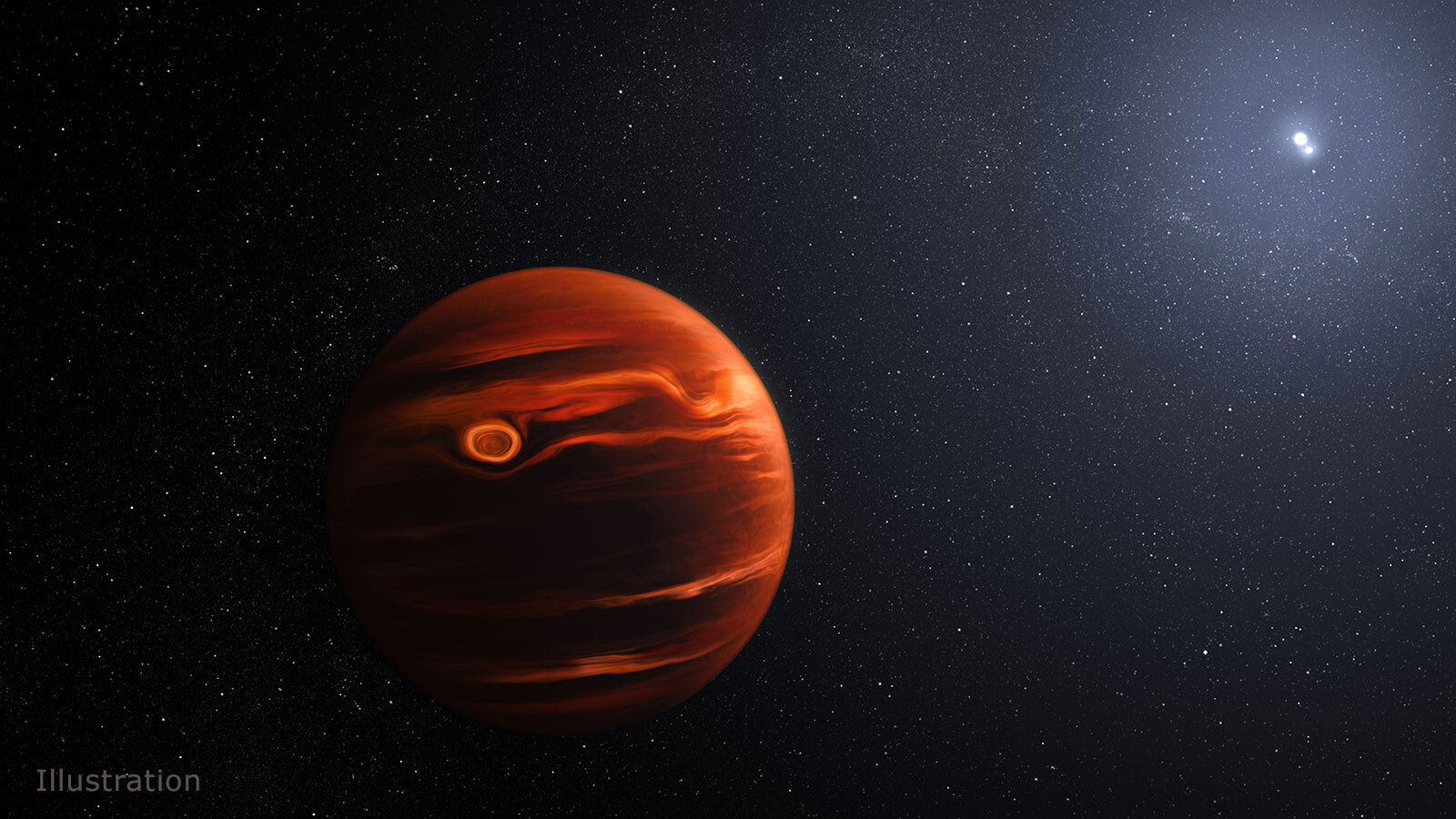James Webb telescope spots dust storm raging on a giant planet nearly 20 times the size of Jupiter
Using the James Webb Space Telescope, scientists observed a massive dust storm in the atmosphere of VHS 1256 b, a 'super-Jupiter' exoplanet located 40 light-years from Earth.

Forty light-years away, an extraterrestrial sandstorm rages on a planet orbiting two stars.
Although this might sound like Luke Skywalker's home planet of Tatooine, this sandstorm was spotted on a gaseous world up to 20 times the size of Jupiter. Using the James Webb Space Telescope's (JWST) powerful detectors, scientists observed not only the sandy clouds but also water, methane and carbon dioxide in the planet's atmosphere. The observations were published March 22 in The Astrophysical Journal Letters.
The "super-Jupiter" planet — meaning a gas giant larger than Jupiter — is known as VHS 1256 b and orbits its two stars so far away that it takes 10,000 years to complete one orbit.
Related: 35 Jaw-dropping images from the James Webb Space Telescope
Because the exoplanet is so far from its host stars, the stars' light does not obscure the planet and thus scientists can observe it directly. For observations of exoplanets that orbit closer to their stars, scientists must study the light that a host star shines through the exoplanet's atmosphere, rather than studying the planet directly.
"VHS 1256 b is about four times farther from its stars than Pluto is from our sun, which makes it a great target for Webb," Brittany Miles, an astrophysicist at The University of Arizona and lead author of the new study, said in a statement. "That means the planet's light is not mixed with light from its stars."
The clouds JWST observed are made of tiny silicate particles that are even smaller than grains of sand. These silicate particles "may be more like tiny particles in smoke," study co-author Beth Biller, an astronomer at the University of Edinburgh in the U.K., said in the statement. Larger particles in the planet’s atmosphere could be like very small grains of sand, she added.
Get the world’s most fascinating discoveries delivered straight to your inbox.
The clouds are also incredibly hot: The temperature in that layer of the planet's atmosphere soars to 1,500 degrees Fahrenheit (830 degrees Celsius). According to the researchers, the dust storm won't last forever. VHS 1256 b is a relatively young planet — just 150 million years old — which means it will change as it ages. Because it's so far from its host stars, VHS 1256 will cool, and its turbulent atmosphere may clear up, according to the researchers.
The team observed the planet's turbulent atmosphere using JWST's suite of infrared cameras, including the Near-Infrared Spectrograph and the Mid-Infrared Instrument. The infrared light spectrum allows scientists to get more precise measurements of the planet's emitted light without interference from any visible light from its host stars.
The new paper was just the beginning of the team's dive into JWST's measurements of the massive exoplanet.
"We've identified silicates, but better understanding which grain sizes and shapes match specific types of clouds is going to take a lot of additional work," Miles said in the statement. "This is not the final word on this planet — it is the beginning of a large-scale modeling effort to fit Webb's complex data."

JoAnna Wendel is a freelance science writer living in Portland, Oregon. She mainly covers Earth and planetary science but also loves the ocean, invertebrates, lichen and moss. JoAnna's work has appeared in Eos, Smithsonian Magazine, Knowable Magazine, Popular Science and more. JoAnna is also a science cartoonist and has published comics with Gizmodo, NASA, Science News for Students and more. She graduated from the University of Oregon with a degree in general sciences because she couldn't decide on her favorite area of science. In her spare time, JoAnna likes to hike, read, paint, do crossword puzzles and hang out with her cat, Pancake.


